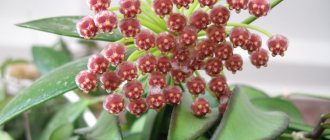Every housewife dreams of seeing her garden plot blooming and fragrant. For this, a lot of effort and time is spent, a combination of different plants is selected, and flower beds are erected. But it is impossible to imagine a single flower bed without a beautiful and delicate eustoma flower. In addition to growing in open ground, this plant looks great in a flower pot on the windowsill.
If the reader has never heard or seen this beautiful flower, then the editors of the Agronom.guru portal will help you understand the question of how to properly plant perennial eustoma and tell you about further care. The article will also present photos of buds and flowers that amaze with their beauty.
An ideal solution for decorating a personal plot
Types of Irish rose eustoma - brief botanical information
Perennial eustoma is a delicate and luxurious flower that came to our country from Central and South America and immediately won the hearts of many gardeners. In nature, only blue and purple flowers exist, but thanks to the efforts of breeders, varieties of various shapes and colors have been developed.
The flower is original not only for its beauty, but also for its various names. In each country, the plant has its own name: in Ireland - Irish rose, in Japan - Japanese, in France - French love rose, and in Ireland - Irish rose or Texas bluebell. Eustoma is also called lisianthus, which means “bitter flower” in Latin. The flower received its second name for a reason, since it belongs to the Gentian family and contains a large amount of gentianin, genceopecrin and genteamarin. All these poetic names are true and show the love of many countries for this amazing and unusual perennial.
Lisianthus and eustoma are the same plant
Why is eustoma compared to a rose?
Eustoma (lisianthus) is an ornamental plant that, thanks to its beautiful flowers, resembles a rose in many ways. Flowers are up to 8 cm in diameter. Eustoma has a straight trunk with branches, matte bluish leaves and no thorns. The height of tall varieties can reach 1.2 m.
Landscape designers use the plant to decorate the garden, and florists actively introduce it into spectacular bouquets. This is facilitated by the fact that even cut plants can retain freshness in a bouquet for a long time.
Popular varieties of perennial eustoma, grown in the middle zone, include the following varieties:
- Russella - large-flowered variety;
- Echo – grown primarily for bouquets;
- Aurora, which blooms early and has double, showy flowers;
- Mermaid - a potted version of eustoma, has a height of about 15 cm;
- Flamenco is an unpretentious tall flower;
- Little Bell variety.
Lisianthus has many varieties that differ in size and color.
Photo of a rose-like eustoma flower in a garden and bouquet
Irish rose can be grown at home on the windowsill and in the garden. This plant looks great as a cut flower because of its beautiful flowers, which resemble half-opened silky roses. Flowers can stand in water for a long time without losing their beauty.
Photo of flowers in the garden
What eustoma looks like in bouquets, photo
Open ground or pot - where is it better to grow eustoma
Most gardeners wonder where it is better to grow perennial eustoma - in the garden or in the apartment? The answer is obvious that no matter where this flower grows, it will always delight its caring owner with its beautiful appearance. When grown in the garden, the plant will decorate any flower garden, will be an addition to rock gardens, and will also look beautiful in single plantings.
The most common is eustoma grandiflora.
Although eustoma is considered an annual plant when grown at home, it will, without any doubt, be one of your favorite indoor flowers, even though it must be grown from seeds every year. If you want to admire beautiful flowers on cold, short days, sow the seeds in mid-summer.
Eustoma prefers bright, diffused light
Description of eustoma
Known among flower growers also under the name of Russell's lisianthus, Irish, Japanese rose, Texas bell or love rose, eustoma is one of the most beautifully flowering crops. In both horticulture and floriculture, it is represented by only one species - grandiflora eustoma (eustoma grandiflorum).
Previously, three separate species were recognized in the genus Eustoma. However, joint work by employees of the Royal Botanic Gardens at Kew (UK) and the Missouri Botanical Garden (USA) to streamline the nomenclature of modern plant taxa, united the following species under a single name - Eustoma grandiflorum: Eustoma grandiflorum, Lisianthus - Eustoma Roussel's, or Russell's (Eustoma russellianum), Eustoma minor, Gentian minor, Western gentian, Blue marsh Eustoma (Eustoma exaltatum).
Wild form of eustoma.
Eustoma grandiflora is a luxurious plant from 30 to 90 cm in height with branched shoots, simple, elegant leaves with a bluish tint and flowers reminiscent of a hybrid of roses and poppies. Up to two dozen large luxurious flowers bloom on one plant per season, and due to the fact that they open not simultaneously, but alternately, eustoma remains attractive for an amazingly long time.
The ability of buds to bloom after the flowers wither is also preserved in bouquets: when buying eustoma or displaying it in vases, you can be sure that each bud will in turn turn into a beautiful Japanese rose. Each plant looks like a bouquet: due to its specific branching, strong, but slender, fan-shaped, eustoma really seems like a bouquet planted in a pot.
Eustoma, cultivar 'Borealis Blue' and yarrow cultivar 'Moonshine'.
Flowering of eustoma depends on the timing of sowing and begins 20 weeks after sowing. For classic garden eustomas, it starts in June-August and lasts until mid-autumn, because the plant will not stop delighting with flowers until the frost reaches -10 degrees and snow falls.
The color palette of eustoma today includes not only white, purple, pink, yellow, orange colors, but also various two-color and watercolor combinations. Compact indoor eustomas have colors that are usually clean and quite bright, while garden ones have a much wider range of colors. It even includes light green and fruity shades.
Variety of colors of eustoma.
The huge assortment of eustoma and its popularity all over the world are the merit of breeders in the USA and Japan. In the West, this plant is one of the most popular cut species, but here, too, this Japanese beauty is slowly gaining ground.
How to plant eustoma seedlings
Growing eustoma from seeds will not be difficult even for a novice gardener. You just need to know when and how to plant seeds for seedlings. Since properly grown seedlings are the key to a strong and healthy plant.
When to plant eustoma when growing from seeds
Eustoma is a slow-growing plant that, when grown from seeds, will bloom only at 25 weeks. Therefore, in order to see the long-awaited flowering, the seeds are sown in mid-December or early January. Many gardeners carry out this procedure in early November.
Since the seeds have good germination, they do not need stratification
How to sow eustoma seeds for seedlings at home: step-by-step instructions
| Photo | Action |
| In order for the plant to delight with its flowering for many years, it is necessary to approach the choice of seeds with all responsibility. You need to buy them only from trusted manufacturers and in yeasted form. | |
| Before sowing, prepare nutritious, well-drained soil. For good ventilation of the seedlings, it is better to sow the seed in shallow furrows. We place the seeds in spilled soil, dig them a little deeper and install a microgreenhouse to create favorable conditions for rapid germination. | |
| If you follow the sowing rules, the first seedlings will appear in 2.5 months. All this time, the plant is growing a powerful root system, which has a positive effect on the growth of an adult plant. | |
| Picking is carried out at the stage of 2-3 true leaves into prepared nutrient soil. | |
| We water the seedlings well and put them in a warm, sunny place. We carry out the first feeding after 5-7 days with calcium nitrate, diluted strictly according to the instructions. Next, careful care of the young plant is necessary. |
The soil
To grow a beautiful, healthy plant, you must comply with everything that planting eustoma requires (soil, sowing time). You can simplify the process and buy ready-made soil mixture in the store. It should be identical to that intended for violets or Saintpaulias. For greater efficiency, you can add sand to it. The soil for eustoma should be light with good air access and a neutral reaction. The second option is to prepare the soil yourself. To do this, you need to take two parts of good garden soil, one part of sand, four parts of peat and 1-2 tablespoons of ash for each liter of mixture.
The prepared soil must be disinfected by any means and method. This can be hot potassium permanganate or steaming. If planting is done in pots, then they must also be disinfected. It is better to choose wide, spacious containers with good drainage holes. Planting seeds can be done in peat tablets, which can later be easily transferred to the main place. The pill container must also be disinfected.
How to properly care for seedlings
In order for the plant to be strong and healthy, it is necessary to properly care for the seedlings. Maintain temperature and humidity conditions, carry out regular spraying and fertilize with complex mineral fertilizers every 10 days.
Properly grown seedlings are the key to long and beautiful flowering
Lighting, temperature and watering
After picking, seedlings require careful care:
- For good growth of eustoma, you need to create moderate warmth, daytime temperature - +20..+25°C, night temperature - not lower than +20°C.
- Eustoma is a light-loving plant. For rapid development, young seedlings need a lot of diffused light. Therefore, it is better to grow them on the western or eastern side. In winter, additional artificial lighting is installed.
- Watering is the most important stage in care. Since the plant does not tolerate both underwatering and overwatering. The soil in the pot should always be kept moist. The water should be soft, settled and not very cold. The flower will be grateful if it is watered with melt or rain water. Such water contains the necessary microelements for good growth and development. In winter, if the flower grows in an apartment, watering is reduced and the humidity is increased using a humidifier or a container of water.
- During the period of active growth, eustoma requires replenishment with mineral fertilizers in a slightly lower dosage than described in the instructions. With enough nutrients, growth will be faster, and flowering will be abundant and long-lasting.
Caring for a young plant will require a lot of effort and patience.
When and how to pick eustoma
Picking is carried out at the age of 6-8 weeks. To do this, prepare separate containers with nutritious, well-drained soil. The seedlings are carefully removed, trying not to damage the root system, and transplanted into separate containers with a diameter of 5 cm. During this period, the plant is regularly watered and fed once every 10 days.
The second picking is carried out after 30 days, when the plant gets stronger and grows green mass. You need to replant the plant to a permanent place, be it open ground or a flower pot, together with a lump of earth. The transplanted plant is watered and shaded from sunlight for 2-3 days.
You can learn how to properly dive eustoma from the video:
Picking is carried out at the age of 3 months
Sowing
Eustoma (lisianthus), the planting and care of which requires special conditions, is very capricious. We plant seeds in prepared containers with soil and cover the top of the pots with film, creating a greenhouse effect. The optimal temperature for this stage is 25 degrees.
After two weeks, you can already observe the first shoots, which develop very slowly, which is the norm for this plant. Gradually, it is necessary to accustom young shoots of a plant such as eustoma (lisianthus) to room temperature conditions. Growing and caring, planting and selecting soil - all this is very important and requires a certain patience and diligence. The plant is very thermophilic, so adaptation to the natural environment is necessary. This period will take about two months.
Planting seedlings in open ground
The young plant is planted in mid-May, when the threat of spring frosts has passed.
If the flower has produced 6-8 leaves, it means it is ready for replanting.
Before planting seedlings in open ground, you need to find a place and prepare the soil. A place for planting is suitable with light partial shade, since a flower in the open sun can get burns on the leaves. Also, do not plant in a place where water accumulates. This leads to rotting of the root system and death of the plant.
For good growth and long flowering, eustoma is planted in well-drained sandy loam or loamy soil with neutral acidity. For planting, dig a hole, lay drainage and mineral fertilizer. The young plant is removed from the pot by transshipment and placed in a prepared place. When planting, do not deepen or expose the root collar. The planted plant is thoroughly watered, and the ground is mulched with straw or freshly cut grass to retain moisture.
The distance between the holes must be at least 40 cm from each other.
Growing from seeds
Growing flowers from seeds is not difficult, but it requires a certain amount of time and knowledge. Beginning flower growers may make mistakes that can cause seed germination to decrease or not appear at all. This can happen due to improper agricultural practices or poor seed quality. In any case, you should not despair, but analyze your actions, correct mistakes and try to grow the eustoma again.
It is better to buy seed material in a specialized store that sells proven seeds. Eustoma seeds are very small and there are about 20 thousand pieces per 1 g of their weight. In addition, they have a low germination rate, only 30% will sprout. But if they are processed, the figure will increase to 40%. Usually, the packaging with seeds says that the seed has been processed (untreated seeds should not be taken). The seeds are sold in the form of pills, that is, they are placed in a special gel. This allows you to increase the percentage of seed germination and facilitates the process of sowing them.
How to sow seeds for seedlings
For sowing seeds, it is best to use a substrate of peat and humus from the bark of deciduous trees, taken in equal quantities.
You can also use a universal seedling mixture, which you can buy at a flower shop. It has already undergone a disinfection procedure and is neutral or weakly acidic.
You can sow the seeds in peat tablets, which must be soaked for 24 hours beforehand.
- The soil is slightly moistened so that it becomes soft.
- The seeds are distributed over the surface of the soil at a distance of 2-3 cm from each other, slightly pressing into the ground.
Important! The seed material is not covered with soil.
- I water the crops with warm water and spray them with a spray bottle.
- The containers are covered with film and several small holes are made in it using a needle or toothpick for air circulation and left in a warm place.
- Shoots should appear within 15 days.
- After the sprouts appear, the film is removed.
- The seedlings are sprayed with a solution of phytosporin to protect them from the appearance of fungal and putrefactive diseases.
Watch the video! Eustoma. Secrets of growing seedlings. Picking seedlings!
How to care for seedlings
Air temperature and lighting
It is necessary to monitor the temperature. During the day the temperature should be about 20-22 °C, at night the temperature should not fall below 14 °C.
The duration of daylight should be at least 12-14 hours, since lighting stimulates the life processes of the plant. If there is less daylight, it is necessary to organize artificial illumination of the eustoma.
Watering
Eustoma loves moderate watering without waterlogging the soil. It is better to water in the morning, so that by evening the leaves of the plant are sprinkled. It is necessary to constantly monitor the level of soil moisture, since if overmoistened, the eustoma can be affected by blackleg (rotting of the root system). In this case, it is almost impossible to save the plants.
Picking
45-60 days after sowing the seeds, the seedlings grow to 4-5 cm in height and 1-2 true leaves form on it. At this time, the seedlings are picked into separate cups, the diameter of which should be approximately 6 cm. The procedure must be carried out very carefully, capturing the seedlings along with a lump of earth, so as not to damage the weak root system.
- The cups pour fertile soil and make small holes according to the size of the root system.
- They transfer seedlings with a clod of earth into them.
- The root collar should be at the same level as before picking.
- After the procedure, the plants are watered with a phytosporin solution to prevent diseases.
- If the root collar appears above the soil surface after watering, it is necessary to add more soil.
- The seedlings are covered with a plastic bag to adapt them to a new place.
- When the rhizome of the plant completely fills the container, it is recommended to re-pick into cups of larger volume. This is necessary for the active growth of seedlings.
10-14 days before transplanting seedlings into open ground, seedlings must be hardened off. To do this, they take her outside for several hours. The main thing is to ensure that it is not exposed to direct sunlight.
Planting seedlings in open ground
Transplantation of seedlings to a permanent place is carried out in good weather conditions, when the risk of night frosts has passed.
- To plant eustoma, it is necessary to prepare a well-lit place in an area where there are no drafts and where it is not exposed to direct sunlight.
- The soil is dug up well, breaking up large lumps, removing weeds, and watering.
- The soil should be loose, nutritious, and breathable. Moisture in the ground should not stagnate, otherwise the plant will die.
- Before planting, 24 hours before the procedure, it is necessary to water the eustoma seedlings so that the soil becomes soft and moist. This will allow you to calmly pull out the seedlings along with a lump of earth without damaging the root system.
- Transplantation must be carried out extremely carefully, transferring the seedlings along with a lump of earth. The hole is dug according to the size of the root system. Water is poured into the holes so that the soil becomes soft and dirt forms. Seedlings are placed in holes and covered with soil.
Important! The root collar should be at ground level. It is possible in slightly recessed holes.
- The distance between plantings should be at least 15 cm; for tall varieties, the distance is 20 cm.
In the future, eustoma requires regular but moderate watering. In this case, it is necessary to monitor the amount of precipitation and air temperature. To maintain an optimal level of soil moisture, it is recommended to mulch the ground around the plant.
Due to abundant flowering, thin stems can lie down under the weight of the buds. For individual plants, pegs are driven in and the stems are tied to them. For large plantings, it is better to stretch a trellis from twine or wire.
Caring for eustoma in the garden
Caring for the flower is simple. The main thing is to water and feed the plant on time. During active growth, the soil around the plant is regularly loosened and kept moist. To do this, the ground is mulched with straw, leaves or bark.
During flowering, mineral complex fertilizers with a high potassium content are applied. Tall varieties are provided with a support that will protect them from gusty winds and from the pressure created by a large number of buds and flowers. For long-term flowering, it is necessary to promptly remove dried inflorescences so that the plant does not waste energy on ripening the seeds.
What could be more beautiful than eustoma growing in the garden?
Preparing for winter
When the Irish rose fades, it is necessary to prepare for wintering. In regions with warm winters, the flower can overwinter in open ground. If winters are harsh and snowy, then the plant is dug up, transplanted into a pot and taken to a room where the air temperature does not drop below +15°C. If the temperature is too high, the leaves of the lisianthus will turn yellow, and over time the plant will dry out completely.
Low temperatures also have a detrimental effect on the flower. In winter, most plants enter a dormant period, during which time they accumulate strength for future growth and flowering. During the hibernation period, the plant requires proper care. Watering is kept to a minimum, making sure that the soil is kept moist. In spring, the awakening of the plant can be recognized by the appearance of new young leaves. As soon as the temperature stabilizes, the bush is planted in its original place and awaits the long-awaited flowering.
At the slightest frost, lisianthus dies
Eustoma flowering
If all care rules are followed, the first inflorescences on the plant appear 5 months after the formation of the first shoots. During flowering, the gardener must constantly pick off faded buds, which not only spoil the appearance of the flower, but also provoke the development of certain diseases.
Note! If the crop care is correct and timely, then repeated flowering can be observed within three months after the first wave of ovary formation.
Caring for eustoma at home when planting in a pot: step-by-step instructions with photos
| Photo | Action |
| In order for the Irish rose to decorate your apartment, you can sow the seeds yourself or purchase an already mature seedling. | |
| For a plant to grow and develop well, it needs bright, diffused light. On the south side it is shaded from direct sunlight. In summer, the flower is taken out into the open air, be it a loggia or a personal plot. In the autumn-winter period, additional lighting is necessary. | |
| The air temperature in summer should not fall below +20°C. With the onset of autumn, the temperature decreases. If the flower is grown as a perennial, it is necessary to provide it with a dormant period in winter. The temperature at this time should not rise above +15°C and not fall below +10°C. | |
| Humidity also plays an important role. When the air is dry, the plant will shed its leaves. A humidifier is installed to increase the air. Spraying is strictly prohibited, as too high humidity leads to fungal diseases. | |
| Water once every 7 days as the soil dries out. The water that forms in the pan is removed immediately, as this can lead to rotting of the root system. | |
| During the period of active growth and flowering, the Irish rose is fed with mineral fertilizers every 10 days. | |
| If eustoma is grown as an annual, it does not need to be replanted. If it is a perennial, transplantation is carried out using the transshipment method. | |
| For long-term flowering, faded stems are removed, leaving at least two pairs of leaves. New shoots will grow from these stems over time. | |
| To prevent the development of fungal diseases, the plant should not be allowed to overcool. If you follow these simple rules of care, eustoma will become your favorite indoor plant, which will delight its owner with abundant and beautiful flowering. |
Diseases and pests of eustoma
With good care, eustoma is very rarely exposed to disease and attack by insect pests. But there are times when the following appear on your favorite flower:
- spider mite;
- aphid;
- scutum;
- slugs
Treating the flower with Aktara or Fitoverm will help you quickly get rid of pests. When slugs appear, it will be more effective to collect them manually to prevent them from crawling onto neighboring plants.
The most common diseases are:
- powdery mildew;
- gray and root rot;
- Fusarium
Before treating with insecticides, the bush is carefully inspected and all damaged areas are removed.
You can also fight pests and diseases using traditional methods. To do this, mix red and black pepper, powdered mustard and garlic gruel. Everything is filled with water and left to infuse for several days. The resulting solution is used to treat the plant in cloudy weather, since burning substances can cause leaf burns.
With proper care, eustoma will never know about pests or diseases
Pollination
Eustoma is a perennial plant, the roots of which are planted in the form of already formed seedlings, but in most cases it is still propagated by seeds. To obtain good seed material, it is necessary to carry out a simple pollination process. To do this, you just need a soft brush. With its help, pollen is transferred from one plant to another. After some time, the seed box ripens. They are very small, but are characterized by increased germination. From one box you can get up to 15 thousand seeds. Once ripe they will be ready for sowing.











